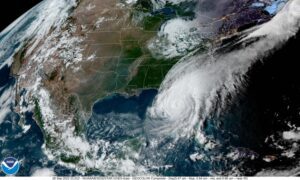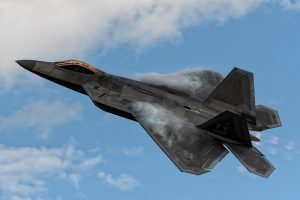 Private Flying Rules: FAA Part 91, 121, 135. There are numerous rules and regulations governing all air travel, but let’s take a look at the three most of us fly under. FAA Part 121, covering Domestic, Flag and Supplemental Operations, is the most familiar as it is what all commercial airlines fly under including the major airlines and the regionals. Since we focus primarily on private air travel, charter, emptylegs, et cetera, we will most likely be flying under FAA Part 135 and in our own planes, FAA part 91.
Private Flying Rules: FAA Part 91, 121, 135. There are numerous rules and regulations governing all air travel, but let’s take a look at the three most of us fly under. FAA Part 121, covering Domestic, Flag and Supplemental Operations, is the most familiar as it is what all commercial airlines fly under including the major airlines and the regionals. Since we focus primarily on private air travel, charter, emptylegs, et cetera, we will most likely be flying under FAA Part 135 and in our own planes, FAA part 91.
Part 91 is a general category and is used in addition to the other Parts. For the purposes of our discussion it applies to the world of General Aviation using smaller airplanes, pilots of various experience levels, and a small amount of commercial operations. Recently, while walking our family puggle (part pug and part beagle), I ran into a neighbor of mine in Brickell. Our conversation was at first all about exotic cars. His desire to find an opportunity to test drive and potentially purchase a new Porsche GT4 RS is a great choice but due to its rarity and demand is a task similar to that of finding the Holy Grail. Quickly we began to discuss my passion, private air travel and charter. He mentioned a company he heard of that had super low rates to fly aboard a pilots own jet. Out came the yellow penalty flag and I quickly explained why that is not an option to explore. Private jets and prop planes operating under the rules of Part 91 cannot charge for flights. We have heard some horror stories of Part 91 operators stretching the rules to make commercial profits. The FAA further elaborated on this idea with Advisory Circular 120-12A as well as the more recent 61-142 which includes real world examples; while advisory in nature, it is clear what is the intent of FAA regulations. The FAA has very specific language regarding a Part 91 operation charging 2 times the cost of fuel and other expenses to conduct a “demonstration flight”, not a commercial pay for charter. This is why Part 135 regulations exist. Part 91 operators are not permitted to conduct the types of flights we think of as being commercial, but some use the rules of the “demo flight” to offer gray area charters for reimbursement to personal contacts or via a charter broker unaware or underinformed of the FAA regulations. As I told my neighbor, these flights happen but they are not legal, and they can be very risky since they are not usually covered by those operator’s insurance policies.
Part 135 covers commuter and on demand operations. Part 135 Operators are the only type of private air charter operations we work with for our clients. There is increased oversight, scrutiny, and maintenance standards with Part 135 which is a significant investment in time and money for the operator. They will also have Wyvern or Argus Certifications for safety with internal audits conducted on a scheduled basis to further protect the clients and their families. The Part 135 operators are commercial, non-scheduled air charter operations such as air taxi and private air charter. These operators have to work within a much stricter detailed structure and legal rules than that of a Part 91 operator. Part 135 operators have full teams of management personnel that are responsible for all operations. They will often have a chief pilot, maintenance crews, and a senior manager of operations. They will also have a clear chain of command in their respective companies not like the Part 91 where the pilot in command is the final authority. Another aspect of our Part 135 operators is that they are often full service operations and have executive level FBOs (Fixed Base Operators). They will often offer in-flight attendants, catering, and luxury car rentals. All will have the required flight following systems tracking, flight status of all their flights, and the reliability of operating control of all the company aircraft they own or manage.
Anyone that flies or plans to fly on a private jet charter, should always be protected by utilizing a Part 135 operator. Your neighbor or friend may be of some assistance to get your hands on that Porsche GT4 RS (good luck) but make sure when you are considering to flying with a private air charter operation you get the guidance and experience of an industry specialist like the team at Emptylegs.net.
In next weeks blog post we will take a look at private air charter versus outright ownership of a private plane or jet.
Until then, Be Social, Fly Private! Sign Up Today! Follow us on Instagram Follow us on Facebook

 When we need to get out of harms way. Hurricane Ian’s insured losses continue to mount. Estimated losses are ranged from 53 to 74 billion dollars from Florida to the Carolinas. The modeling firm, RMS *, estimates that the damage will be very close to $67 billion in insured losses. These figures will rank Hurricane Ian as the All-Time costliest storms to hit Florida and place it 2nd only to Hurricane Katrina nationally as pertaining to insured losses. Densely populated areas such as Naples, Ft. Myers, and the barrier Island Sanibel were devastated and the death toll has already surpassed 100 souls**.
When we need to get out of harms way. Hurricane Ian’s insured losses continue to mount. Estimated losses are ranged from 53 to 74 billion dollars from Florida to the Carolinas. The modeling firm, RMS *, estimates that the damage will be very close to $67 billion in insured losses. These figures will rank Hurricane Ian as the All-Time costliest storms to hit Florida and place it 2nd only to Hurricane Katrina nationally as pertaining to insured losses. Densely populated areas such as Naples, Ft. Myers, and the barrier Island Sanibel were devastated and the death toll has already surpassed 100 souls**. Hurricane Ian will go down in history as one of the worst storms to impact the state of Florida in decades. It devastated the west coast of Florida with near Category 5 winds, torrential and unrelenting rain, plus a whopping 12+ ft storm surge. Like its predecessor, Hurricane Andrew, it caused death and destruction in the billions of dollars. 30 years ago, Hurricane Andrew caused 50 billion in damage, destroyed 60,000 homes, and left 170,000 people homeless. We haven’t had enough time to tally the pain caused by Hurricane Ian, but I’m sure the numbers will dwarf those of Andrew. Most of the areas hit were swamps and mangroves back in the early 1900s until men like Carl Fisher and Henry Flagler etched out their respective fortunes turning these same natural landscapes into concrete and coral stone. We no longer have the protection from mother nature’s palm trees, everglades, and mangroves to protect us. Although newer multi-million dollar homes and buildings are engineered with strength to endure these natural disasters, they seem not as well suited for battle as these weather events get more and more powerful with our ever changing climate and environment.
Hurricane Ian will go down in history as one of the worst storms to impact the state of Florida in decades. It devastated the west coast of Florida with near Category 5 winds, torrential and unrelenting rain, plus a whopping 12+ ft storm surge. Like its predecessor, Hurricane Andrew, it caused death and destruction in the billions of dollars. 30 years ago, Hurricane Andrew caused 50 billion in damage, destroyed 60,000 homes, and left 170,000 people homeless. We haven’t had enough time to tally the pain caused by Hurricane Ian, but I’m sure the numbers will dwarf those of Andrew. Most of the areas hit were swamps and mangroves back in the early 1900s until men like Carl Fisher and Henry Flagler etched out their respective fortunes turning these same natural landscapes into concrete and coral stone. We no longer have the protection from mother nature’s palm trees, everglades, and mangroves to protect us. Although newer multi-million dollar homes and buildings are engineered with strength to endure these natural disasters, they seem not as well suited for battle as these weather events get more and more powerful with our ever changing climate and environment. 